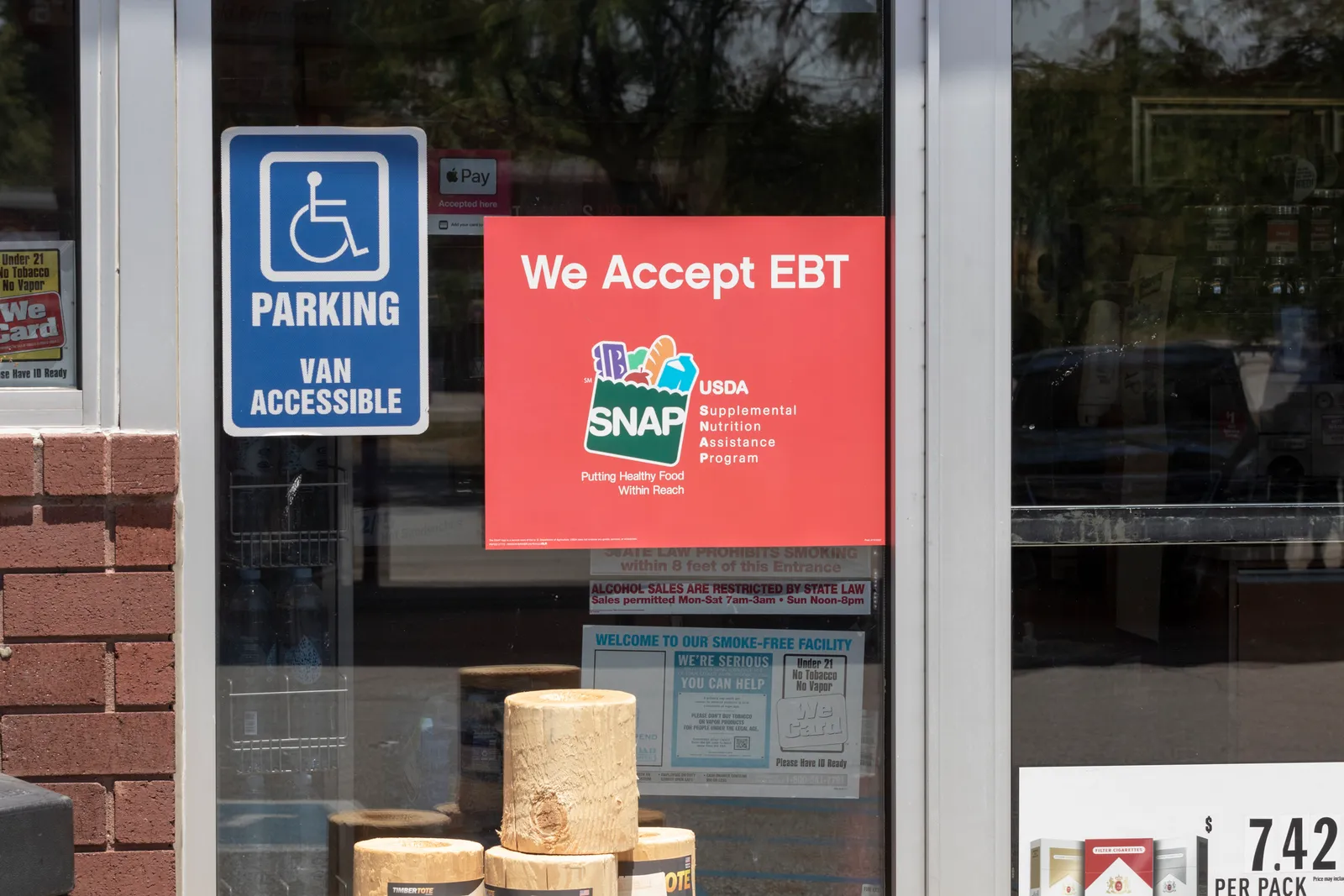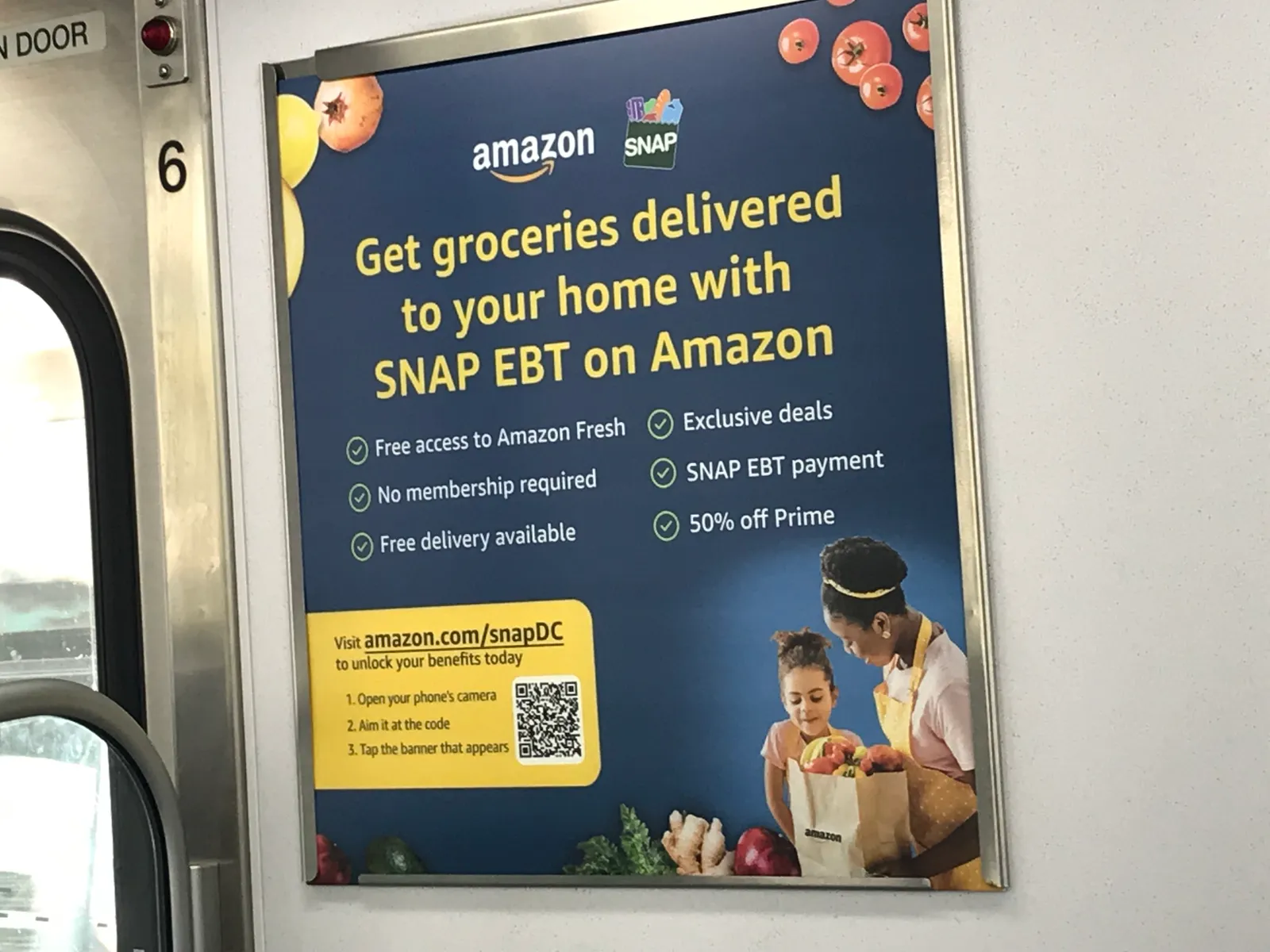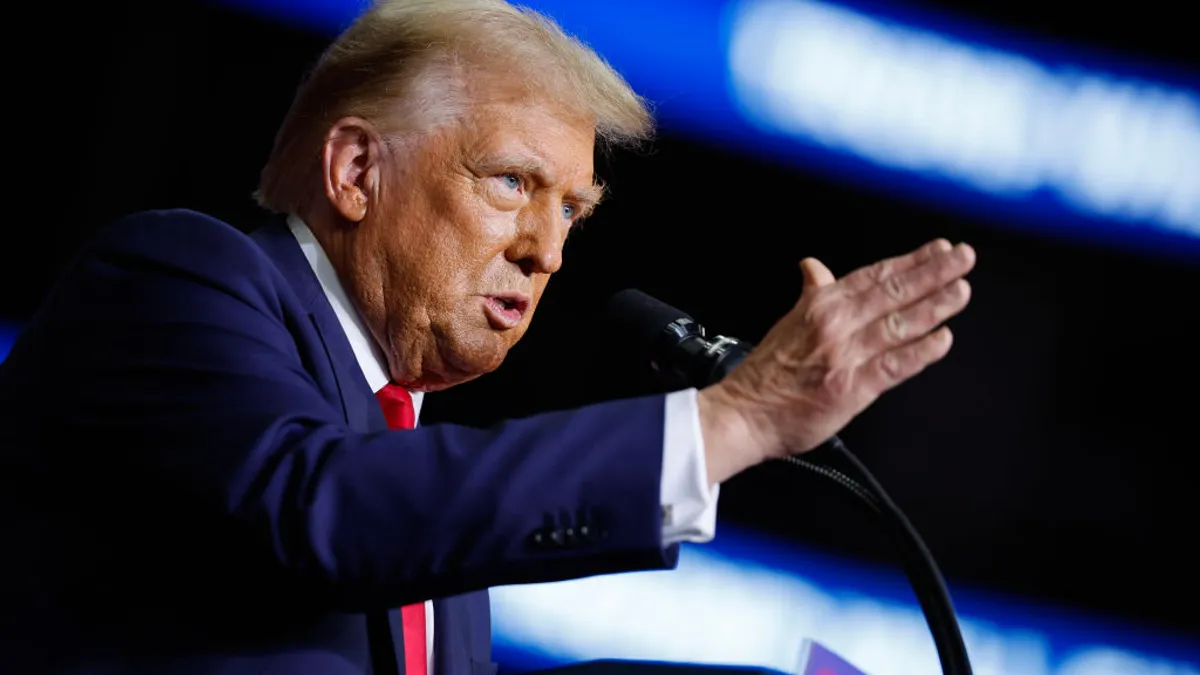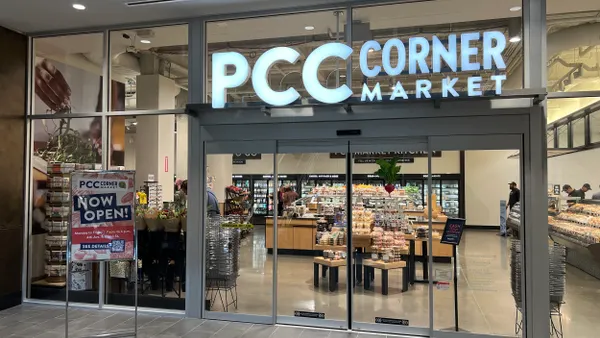With President-elect Donald Trump 55 days away from taking office, policy advocates are bracing for the incoming administration to make changes to SNAP as part of a broader push to reduce government spending.
SNAP is the largest anti-hunger program in the United States. It is also one of the largest federal social welfare programs in terms of cost, according to the Pew Research Center.
Alterations to SNAP would likely impact grocers because SNAP households account for nearly a quarter (24%) of consumer goods spending in the U.S., said consumer insights and data firm Numerator in a report last year.
SNAP households spend 32% more per person than non-SNAP households, according to a Circana report released last week. Grocery executives have previously cautioned investors that SNAP benefit changes have impacted their financial results.
Any changes to SNAP will come at a time when consumers continue to grapple with high grocery store prices and wages that haven’t matched food price hikes, said Salaam Bhatti, SNAP director for the Food Research & Action Center, a nonpartisan research, policy and advocacy nonprofit focused on anti-hunger efforts in the U.S.
Food insecurity is increasing, Bhatti said. An estimated 86.5% of U.S. households were food secure in 2023, almost 1 percentage point lower than the 87.2% of households that were food secure the prior year, according to USDA data.
“Hunger affects every single congressional district,” Bhatti said. “It affects all types of people, everybody, everywhere. No zip code is not affected by hunger.”
While Trump has yet to detail his administration’s plans for SNAP, his first term in office provides clues as to how his return to the White House could impact the food assistance program. The incoming administration will be bolstered by Republicans having won control of the House and Senate in the 2024 election.
Trump’s recently announced cabinet picks include Robert F. Kennedy Jr. as secretary of the Department of Health and Human Services, and Brooke Rollins as secretary of the USDA, pending Senate confirmation. Rollins would oversee SNAP.
Who can participate in SNAP
Federal regulations define eligibility requirements, while states determine an individual’s eligibility and then calculate and issue benefits. Currently, SNAP requires able-bodied adults, with some exceptions, to work or take part in an employment and training program to be eligible for the program, according to the USDA.
During Trump’s first presidential term, his administration attempted to revoke SNAP eligibility for approximately 700,000 unemployed people. His administration’s rule sought to reduce the flexibility states have to grant waivers on the three-month benefits limit for jobless adults not raising small children. A federal court struck down the rule in 2020.
If Trump were to attempt that rule again — or something similar — he would likely face the same legal challenges that successfully blocked it, said Kyle Ross, an economic policy analyst at the Center for American Progress, a left-leaning public policy research and advocacy group.
Work requirements tend to lower SNAP participation rates and, in turn, reduce government spending on the program, Ross said. While, in theory, work requirements aim to help people afford food, they can instead hinder people due to sometimes burdensome requirements, Ross said.
Meanwhile, the public charge rule — a test that immigration officers use to identify if a noncitizen is likely to rely on government support — also can have a chilling effect on SNAP participation, Ross said. The Trump administration’s changes to the public charge policies in 2019 included allowing officials to use previously excluded programs, such as SNAP, when considering whether to allow someone to enter or stay in the U.S. President Joe Biden threw out that policy update in 2021.

SNAP eligibility could, however, expand in specific ways in the near future. Bhatti noted there is bipartisan support for repealing the ban on people with felonies on their records from receiving SNAP.
In addition, ensuring that groups such as college students can receive SNAP benefits and that work during SNAP training programs doesn’t count toward eligibility requirements has also received support from across the political aisle, Ross said.
How much the federal government spends on SNAP
Trump will likely look to cut federal spending on SNAP in an effort to find savings to cover his tax proposals, Ross said.
The Cato Institute, a libertarian think tank, claimed last year that increased spending on SNAP between 2019 and 2023 played a part in raising federal budget deficits. The think tank highlighted the option of replacing SNAP with a “Fruits and Vegetables Program” to save taxpayers around $100 billion annually.
Trump and Republicans have previously attempted to pull back on SNAP spending. Trump’s 2021 budget proposed to slash SNAP by more than $180 billion — nearly 30% — over the next 10 years, according to nonpartisan institute Center on Budget and Policy Priorities.
The version of the Farm Bill currently in the Republican-controlled House proposes to cut SNAP spending by $30 billion over 10 years and proposes limiting the USDA’s ability to update the Thrifty Food Plan, which is the basis for determining SNAP benefit amounts.
The Food Research & Action Center is advocating for the preservation of the Thrifty Food Plan because having Congress regularly re-evaluate SNAP benefits helps keep the benefit amounts based on the latest dietary guidelines and market prices.
Which foods are eligible under SNAP
One of the key areas for SNAP that the National Grocers Association is keeping an eye on is SNAP Choice — the ability for consumers to choose the foods they want to use their SNAP dollars on, Stephanie Johnson, NGA’s vice president of government relations, said in a webinar before the election.
Republican control of the House gives Rep. Andy Harris (R-Md.), who is chairman of the House Appropriations Subcommittee on Agriculture, Rural Development, Food and Drug Administration, “a lot of power” to push forward legislation with a pilot restricting what kinds of foods SNAP consumers can buy with their benefits, Johnson said.
Harris recently told Politico that the “Make America Healthy Again” effort by Kennedy, Trump’s pick to head the DHHS, could help boost the Congress member’s controversial proposal to make foods that aren’t “nutrient dense” ineligible for SNAP benefits.
“If we don’t complete the Farm Bill this year, … we will see in both the House and the Senate, SNAP Choice will become an issue both in appropriations and in the Farm Bill for next year,” Johnson said, noting that the NGA will oppose efforts to limit SNAP participants’ food options.
The NGA is “very, very worried” about a USDA study currently underway on what a SNAP restriction pilot would look like, Johnson said, adding that the Trump administration and several Republican-controlled states could be interested in testing the pilot.
“We think states will be able to just copy and paste this study into a memo to the USDA and ask for a waiver to do restrictions,” Johnson said.

Bhatti said that the “continuous” effort to restrict what kinds of food are SNAP eligible, though, comes from a “small group” of people and has been largely rejected by both parties.
Bhatti and Ross each said they would expect to see advocates continue to push for an expansion of what SNAP benefits can be used for, citing hot foods as a prime opportunity. Bhatti noted that restrictions on hot foods are often lifted during disasters.
“Right now, a SNAP participant cannot buy a hot rotisserie chicken from the grocery store with their SNAP benefits and a lot of people are shocked to learn this,” Bhatti said.
Continuing to battle SNAP fraud
Combatting SNAP fraud is a major issue that has bipartisan support, Bhatti and Ross both said.
Criminals are putting skimming devices on point-of-sale systems to steal data from EBT cards, which are still on the magnetic stripe platform, Bhatti said. The switch to the more secure EBT chip cards will take place state by state, soon kicking off in California and Oklahoma in the next few months, Bhatti added.
In 2023, every $1 of stolen benefits through fraud cost SNAP agencies an estimated $3.85, up from $3.72 in 2022, according to research by LexisNexis Risk Solutions.
Replacement benefits, a protection that expires Dec. 20, allow SNAP participants to get stolen benefits replaced up to two times within a federal fiscal year. Both Bhatti and Ross said they want to see replacement benefits become a permanent offering.
“A lot of people were influencing their vote this election because they couldn't afford to put food on the table, so we really need to remind all policymakers that this is a top-of-mind concern for so many people across the country,” Bhatti said.












